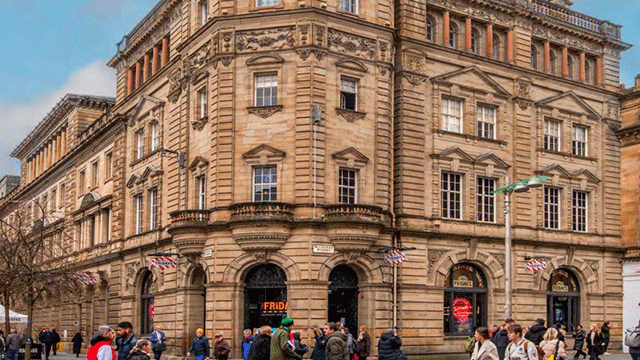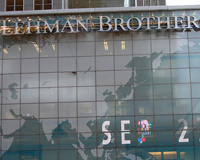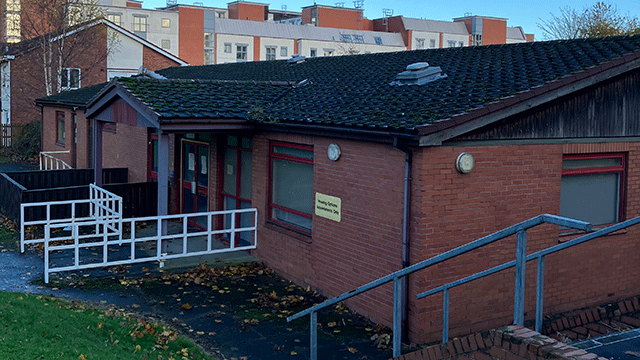Five years ago on 15 September – not long after 9am – Lehman Brothers collapsed. The New York banking business had been teetering since the close of business on Friday. Weekend rescue efforts were getting nowhere. Finally, inevitably, late at night New York time – early morning in London – the mighty bank toppled into Chapter 11 bankruptcy protection thanks, in part, to a property loan book written between 2005 and 2007. Lehmans was left holding over-leveraged and insecurely underwritten loans that ran into billions. There was no escape.
For the company’s London-based team the collapse meant a sudden reversal of fortune. No longer masters of the property universe, they faced an uncertain future.
TV pictures of smartly dressed Lehmans staff carrying their cardboard-boxed possessions out of the offices at Canary Wharf symbolised the sudden change. Five years on, most have found new business homes, after a day that few in the UK property business will forget (see panel below).
Today, Gerald Parkes is chief executive at Sir John Beckwith’s Pacific Real Estate Capital Partners. But in September 2008 he was managing director of real estate private equity Europe for Lehman Brothers, responsible for building a ?ring-fenced business managing US$30bn.
He recalls the weekend of the collapse as a surreal collision of experiences.
“On Friday 12 September, I left work with Lehmans having an AA credit rating – on Saturday I happened to be in St Petersburg at the Yusupovs’ Moika Palace where Rasputin was poisoned, then got told on Sunday we would be going bust, and at work on Monday the ring-fenced real estate team was sitting at our desks in an otherwise empty building,” he recalls.
The real estate business – safe because it was managing external funds – did not face the same immediate traumas as other parts of the Lehman’s business at the Canary Wharf HQ.
“The feeling was of complete shock. AA to empty building in one weekend is quite something,” says Parkes.
Yet a bigger shock was to come. “The drama was weeks later when it turned out that the Royal Bank of Scotland – which at first we thought might be part of the solution to the financial crisis – turned out to be part of the problem.
“By this stage you were waking up in the middle of the night wondering if your savings were safe,” he says.
Efforts to sell the ring-fenced parts of the business met with mixed fortunes. Barclays agreed a quick rescue for the investment banking team, but transferring the real estate team proved to be more difficult. By 2010, Parkes was installed at Beckwith’s Pacific Real Estate Capital Partners, where he remains today.
Studying the economy five years on, Parkes does not give the impression of a man convinced that the only way is up.
“In 2008 the banks were over leveraged; consumers were over-leveraged in many markets; some countries were over-leveraged; politicians were into something that was way over their head; and the financial world was under-regulated.
“Today the banks in Europe are undercapitalised, consumers are still ?as over-leveraged in most places, including the UK; some countries, including the UK, are still over-leveraged; politicians are still over their head and many still don’t grasp it, and now we are over-regulated rather than under-regulated.”
His conclusion is that “the risk has been spread around a bit, and clearly one hopes better systems are in place”, which isn’t exactly a ringing endorsement of five years of financial or monetary policy.
Glimmers of growth – best of all, balanced growth – would be welcome, says Parkes.
But you’ll wait a long time before you hear him cheering.
“However, if the more recent confidence exhibited by the corporate and consumer sectors continues on both sides of the Atlantic, there is a reasonable chance that greater stability will gradually take hold. Let’s hope so.”
Five years on, there is still a long way to go.
Where are they now
The Lehman Brothers’ collapse scattered specialists around the London property market.
Jim Blakemore, former head of European property for Lehman Brothers, and one of the fathers of commercial-backed mortgage securitisations, found a new roost in 2010 with former Morgan Stanley head of real estate investment John Carrafiel at Greenoak Real Estate.
Blakemore founded and led Lehman Brothers European CMBS and Commercial Mortgage Lending Business from 2000 to 2004, before becoming European head of Lehman Brothers Global Real Estate Group from 2004 to 2008.
Today GreenOak has taken root, recently paying around £18.5m for Dixon House, Fenchurch Street, E1, and is behind the consortium backing the £500m regeneration of the Whitechapel Estate, E1.
Jasie Leekha also landed at GreenOak. The former Bear Stearns analyst and Lehmans real estate director from 2004 to 2008 has been involved in restructuring the mighty Lehmans portfolio.
GreenOak’s third Lehman refugee is Chris Taylor, now a senior adviser at the Sloane Terrace business, but previously managing director in Lehman Brothers’ Global Real Estate Group. At Lehmans he was responsible for originating and underwriting European senior and mezzanine loans. GreenOak’s trio declined to comment.
Former Jones Lang LaSalle man James Jakeman was an executive director with Lehmans’ real estate principal investments team from 2000 to 2008, handling investments worth €2bn.
He left Lehman shortly before the collapse and went to Aurum Real Estate. In 2011 Jakeman was recruited by Société Générale Corporate & Investment Banking as managing director and head of UK lending as the French giant prepared to beef up its London property loan book. He began his career in 1995 at Jones Lang LaSalle, where he qualified as a chartered surveyor.
However, six months later, under pressure from European banking regulators, SocGen suspended property lending. Jakeman was recruited in March 2012 by real estate specialists Benson Elliot Capital Management. He declined to talk to EG.
See also:
• Peter Bill: Where were you when Lehman’s collapsed?
• The day Wall Street collapsed: Views from New York and London











